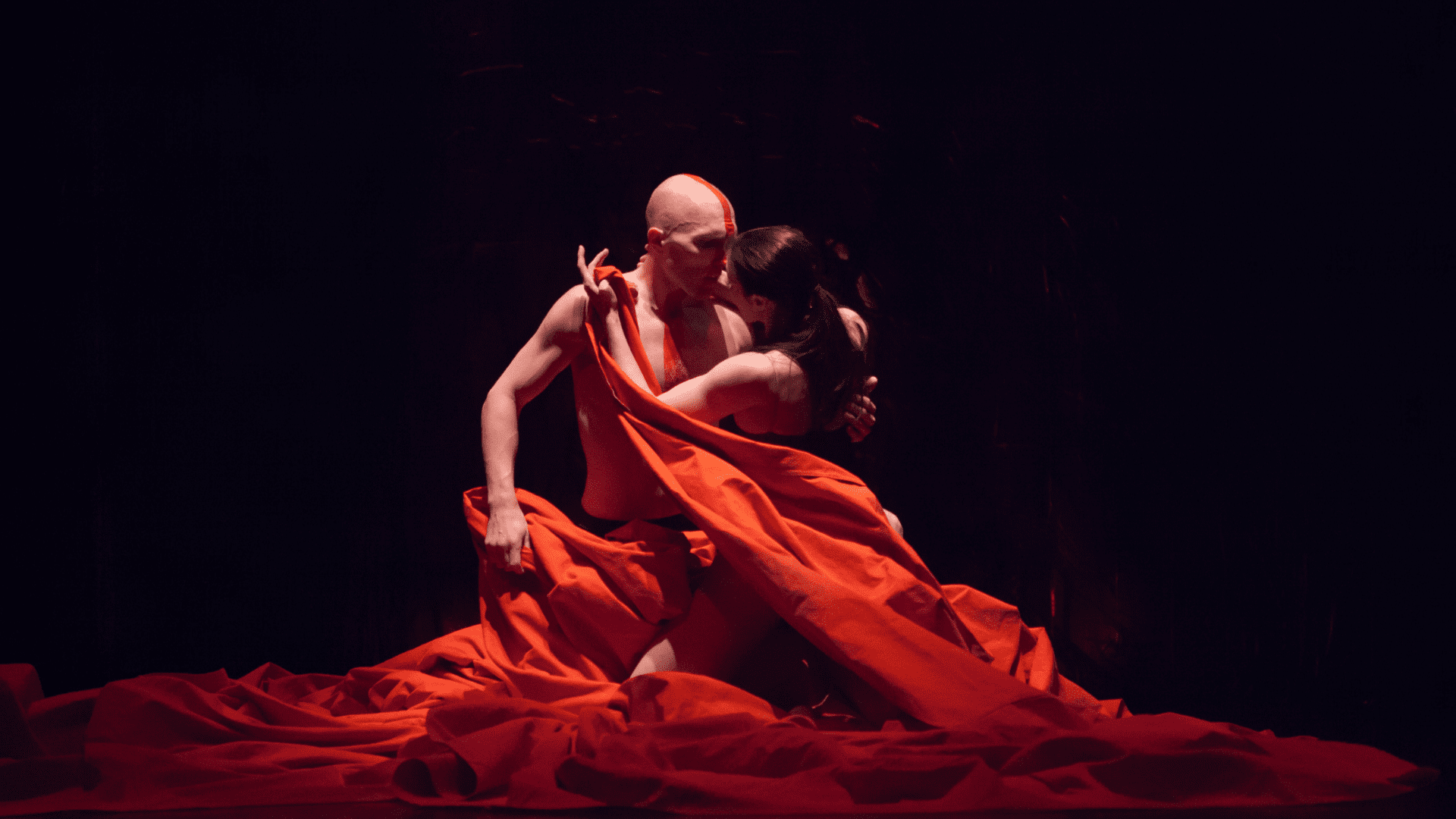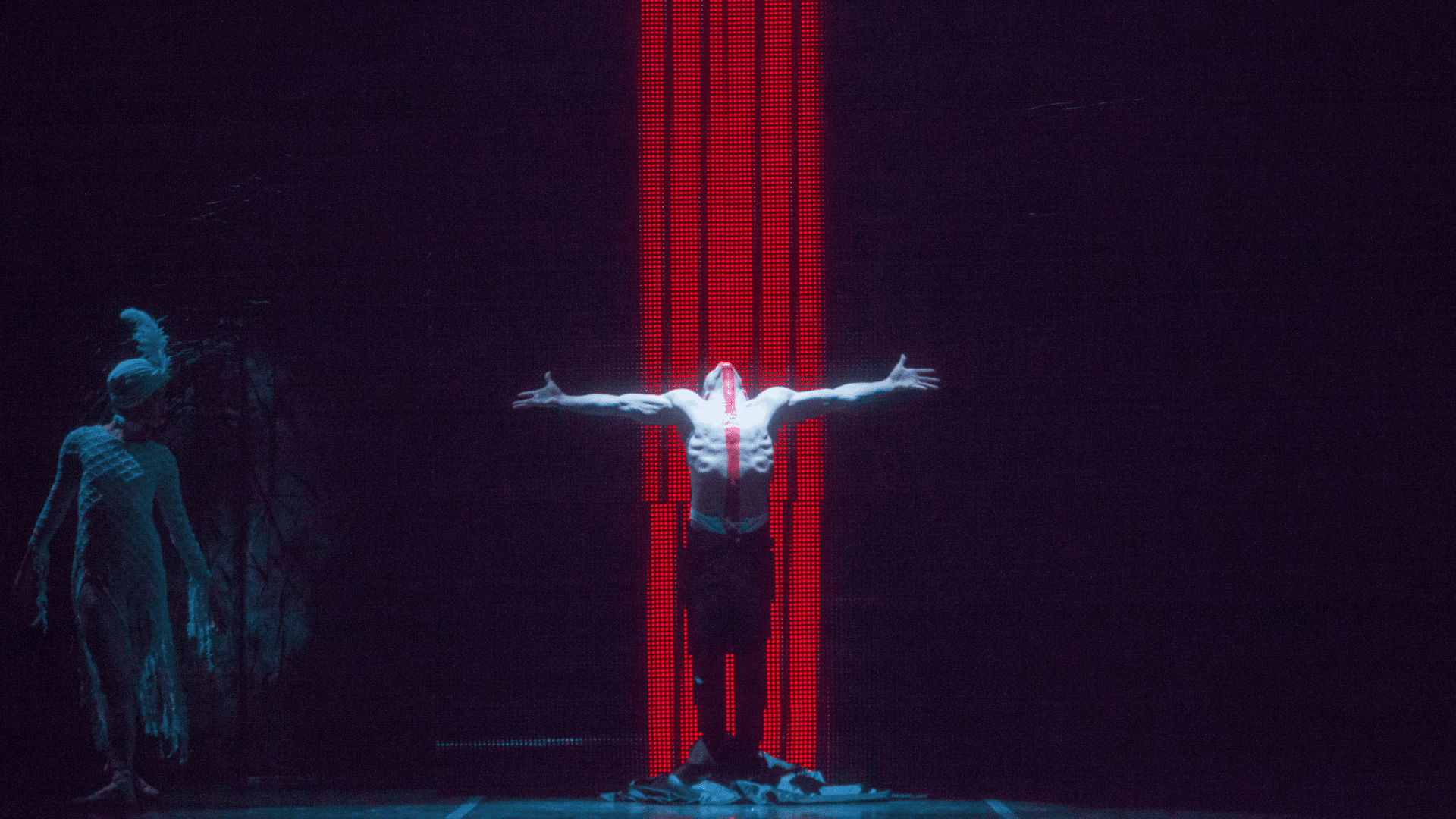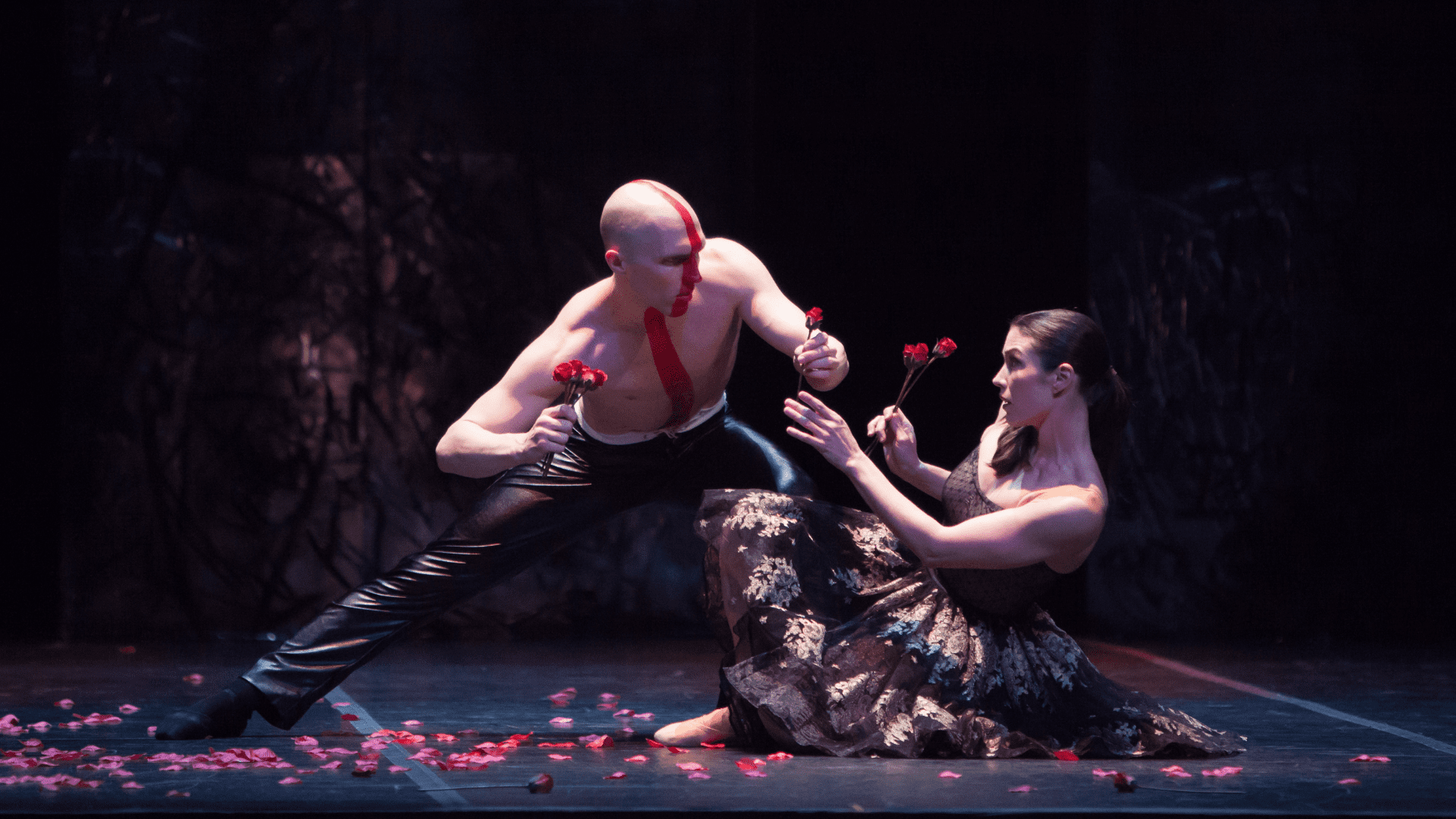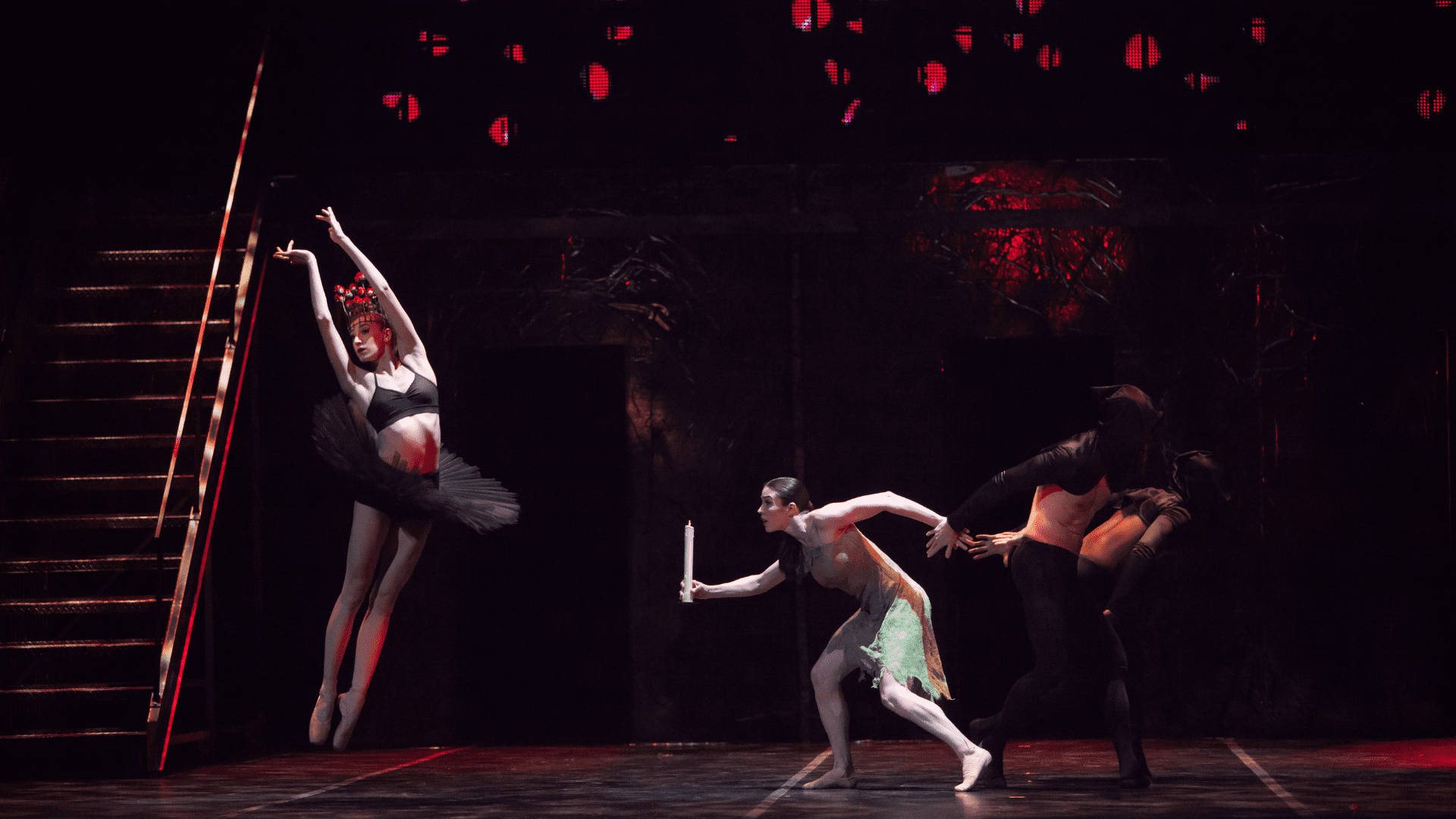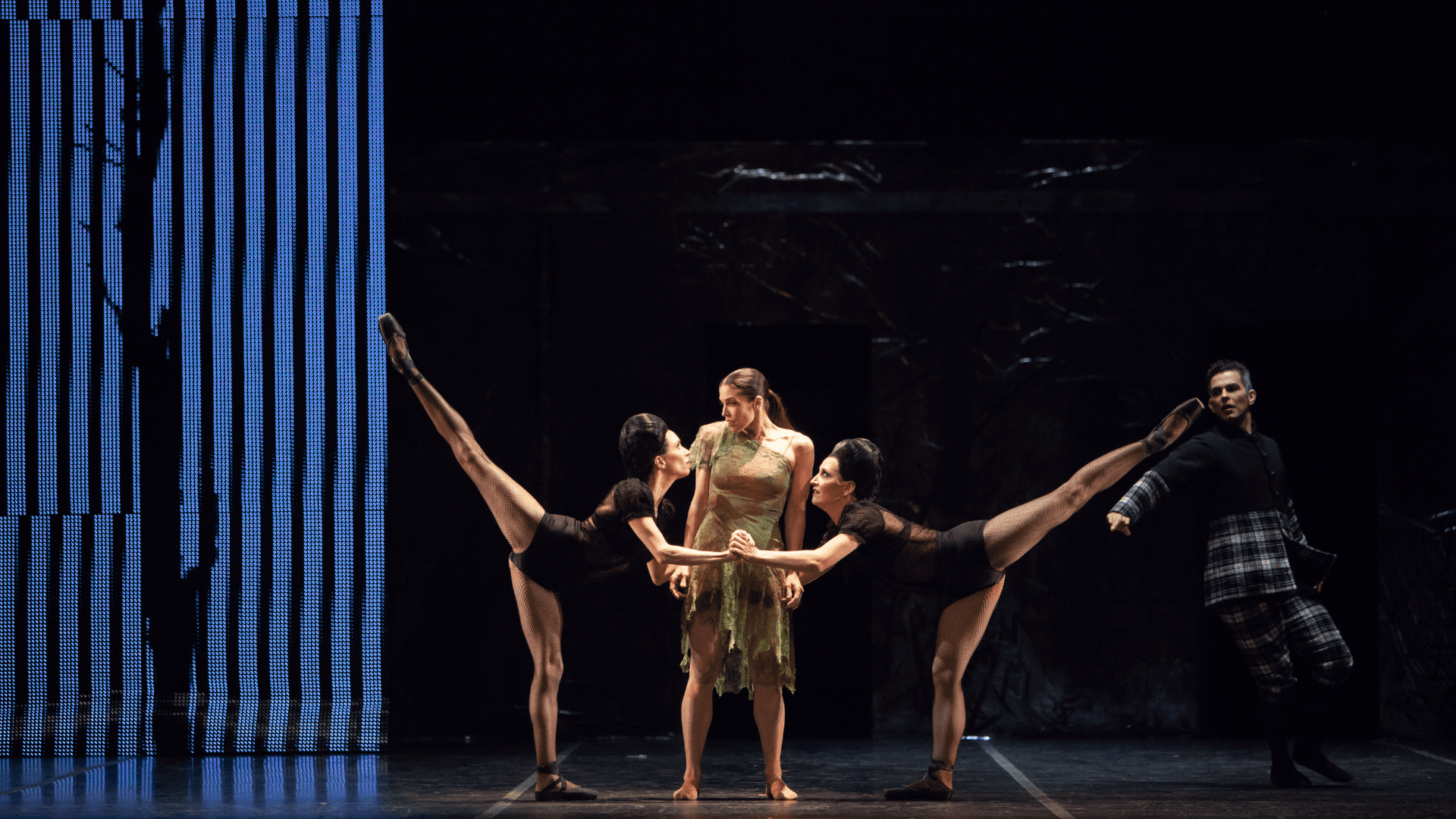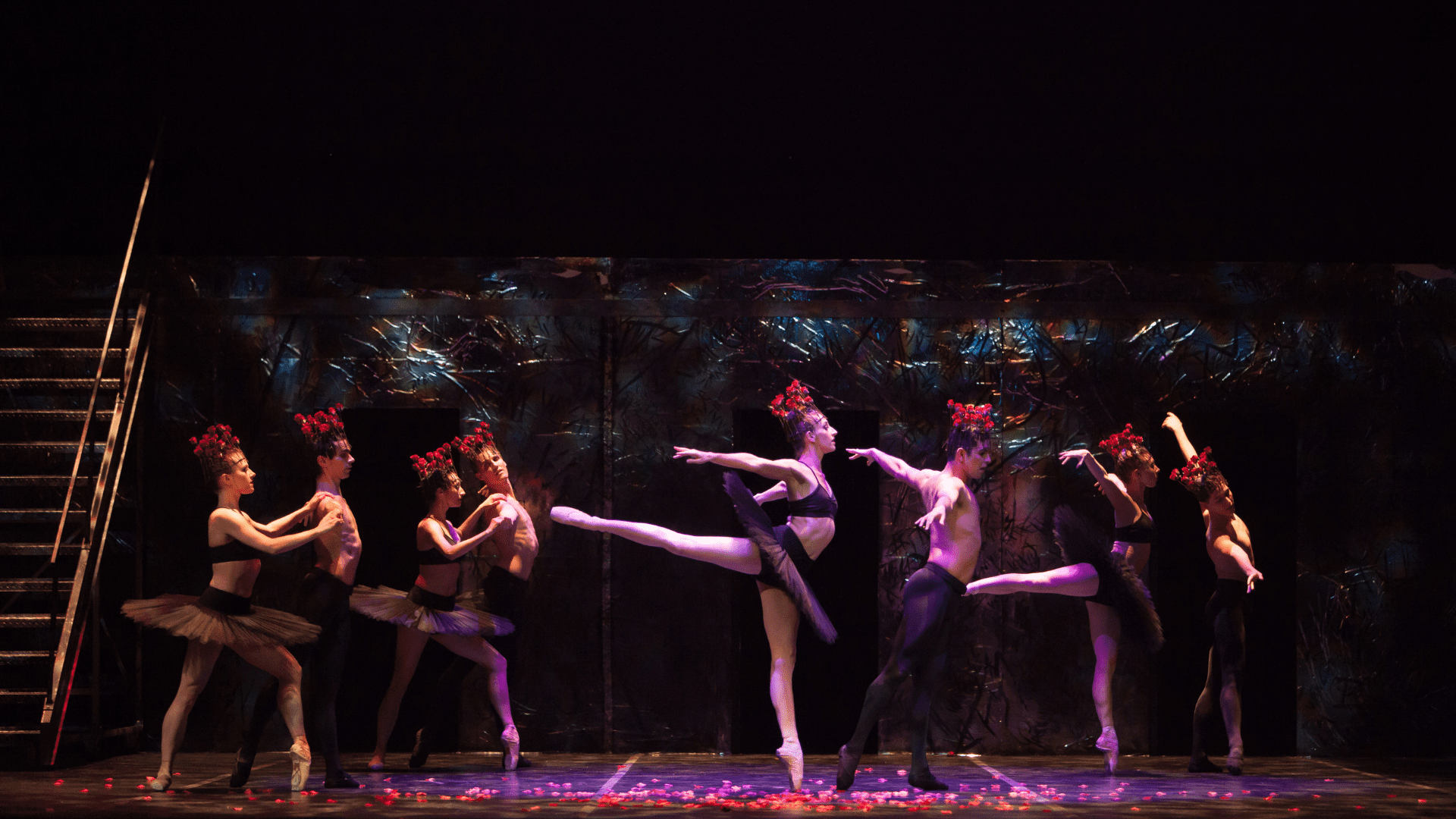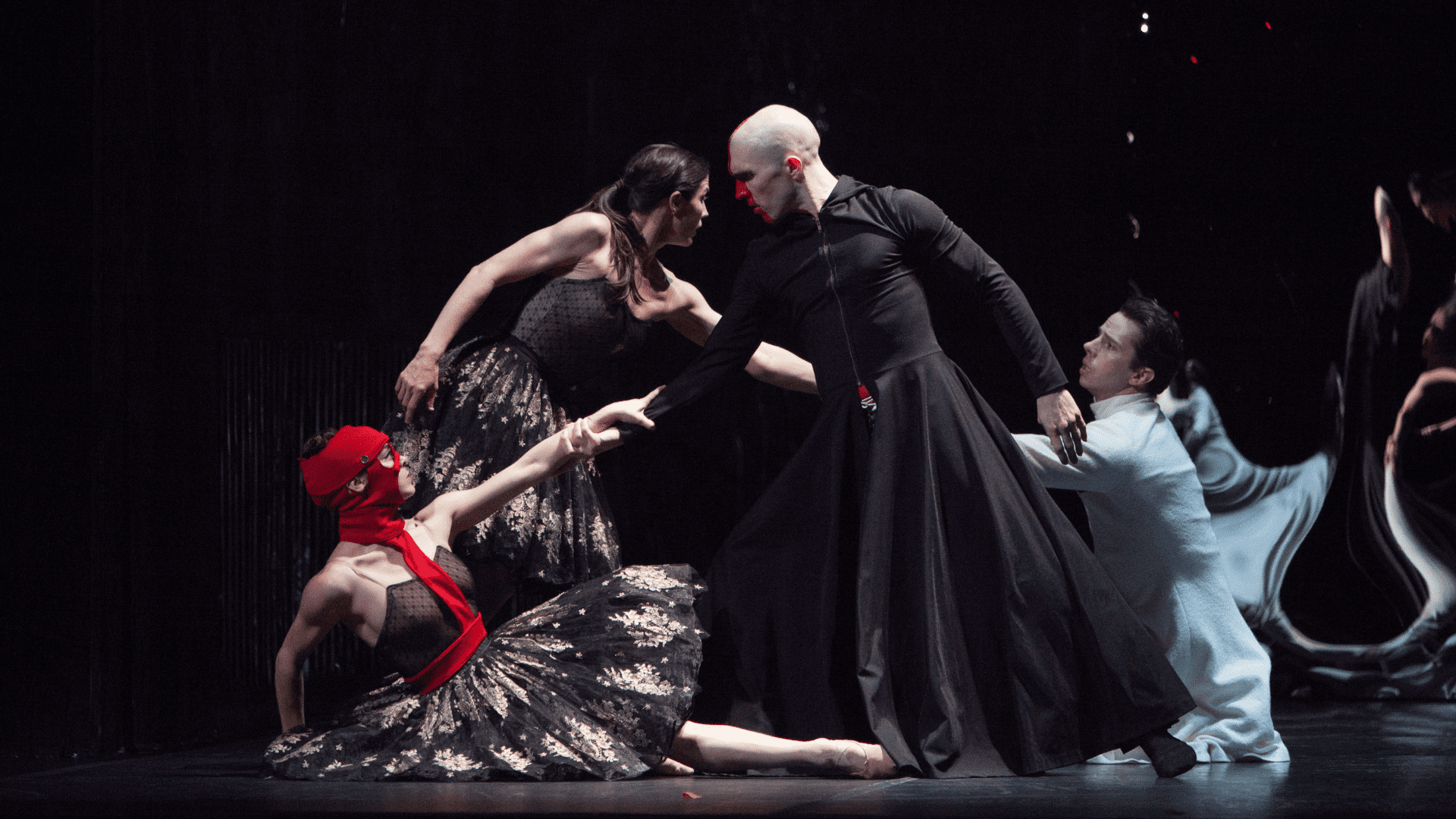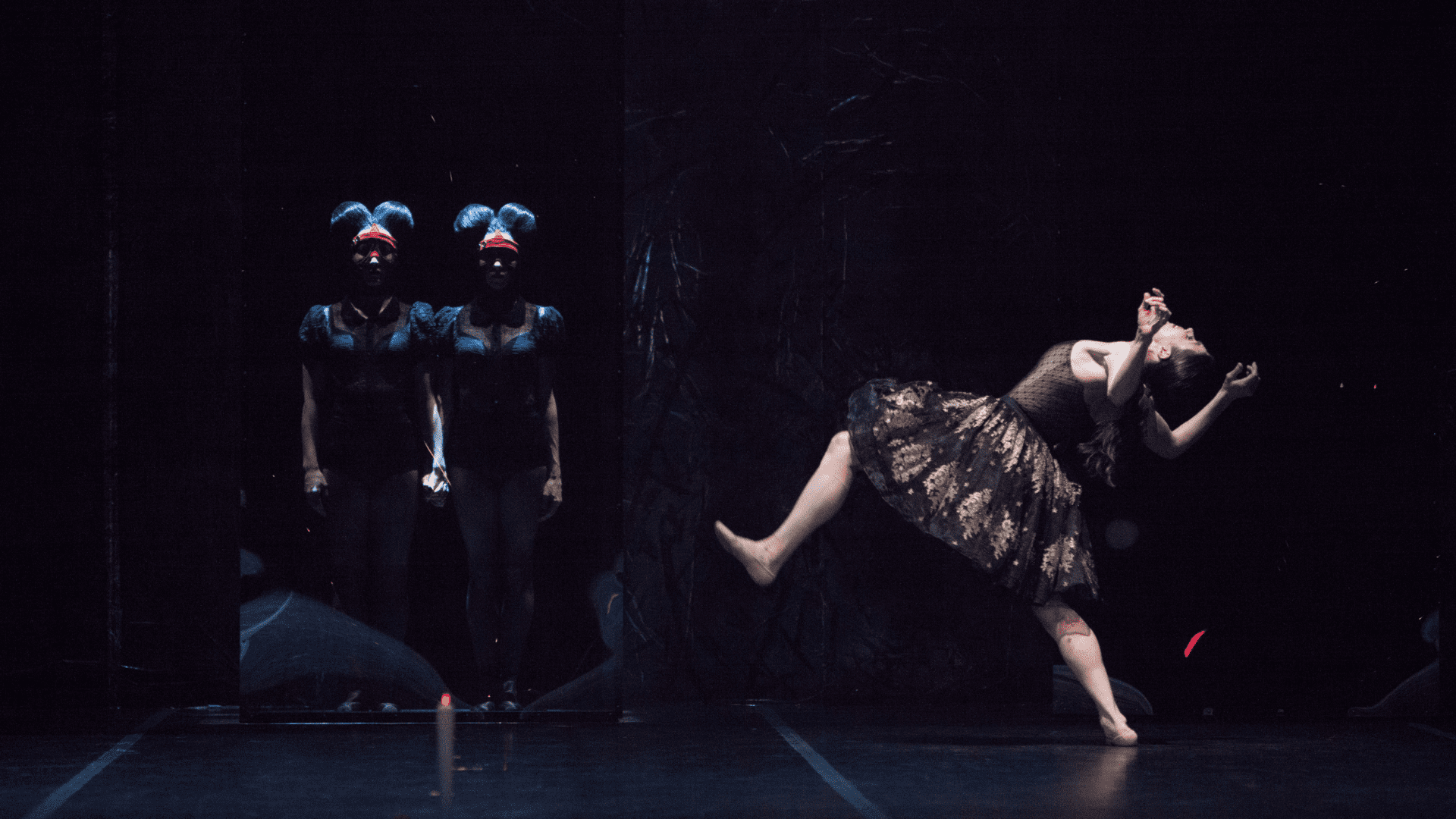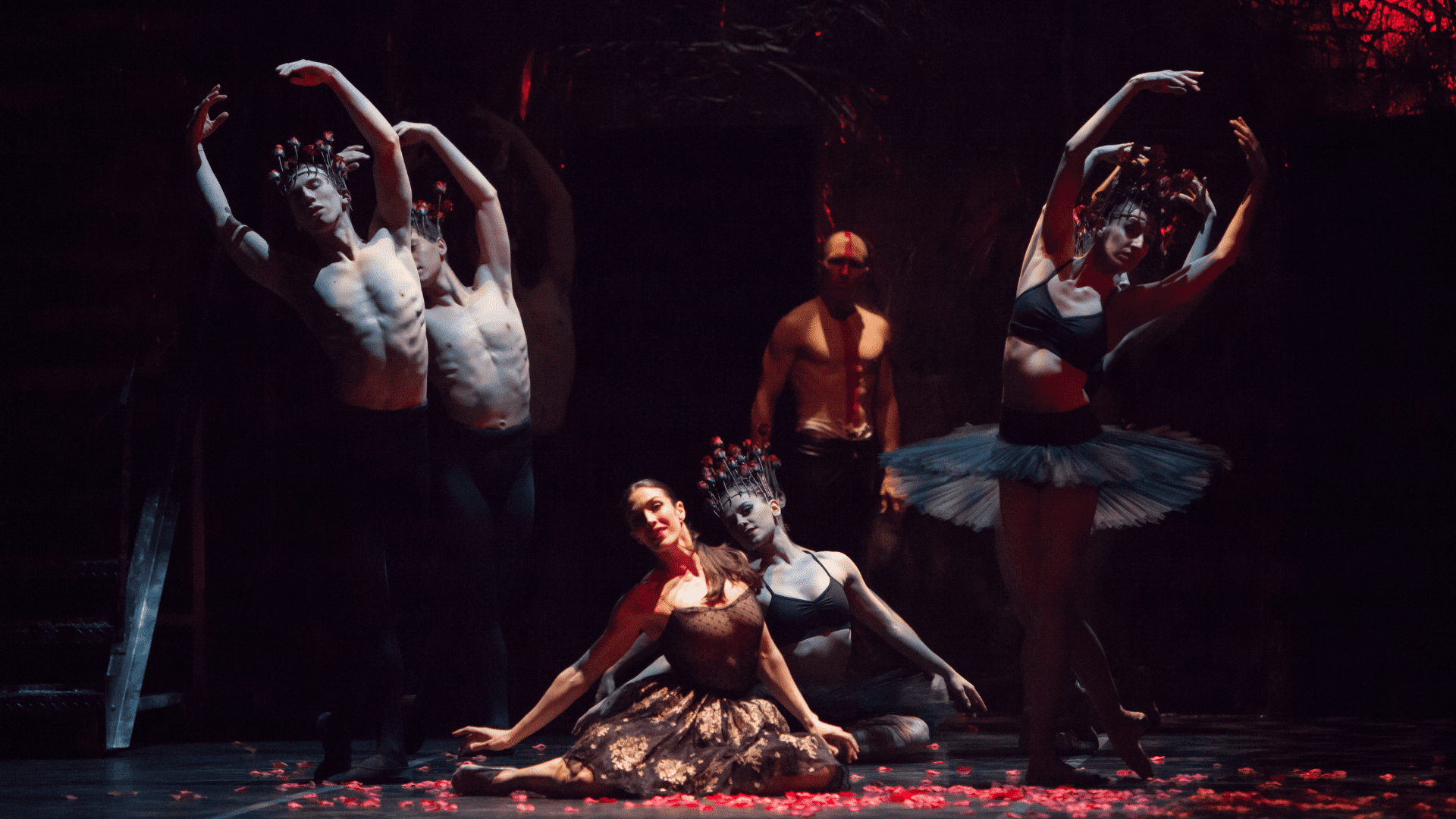BELLE / A Tale of Beauty & the Beast
About the Production
A 3M Innovation Commission
BELLE / A Tale of Beauty & the Beast is a contemporary ballet that reexamines the timeless story of Beauty & the Beast in a very non-traditional way. Ballet Austin Artistic Director / Choreographer Stephen Mills, Composer Graham Reynolds and Production Designer Michael B. Raiford have created a provocative and sensual retelling of this famous romance with sets and costumes that project fantastical, Alexander McQueen-type elements against a gritty, minimalistic backdrop. The look and feel of the production, while very contemporary, was heavily influenced by the 1946 film noir, La Belle et la Bête, by French filmmaker Jean Cocteau, and many stylistic elements, including the lighting design, are reflective of that ground-breaking movie.
Stephen Mills’ innovative and intricate choreography for an ensemble of 20-plus dancers is deeply honest and moving, with characters constantly evaluating their own powers of perception, empathy and acceptance while examining the real beauty and beast within. Graham Reynolds’ haunting music blends classical instruments with industrial sounds to create a remarkable score that is both unsettling and soothing—commanding and hopelessly romantic.
BELLE / A Tale of Beauty and the Beast debuted in February 2015 to sell-out audiences. It is a one-of-a-kind dance work that will surprise, intrigue and deeply engage audiences of all kinds.
CHOREOGRAPHY: Stephen Mills | MUSIC: Graham Reynolds
*Original score by Graham Reynolds commissioned by Ballet Austin and funded by the Texas Commission on the Arts.
Photos by Anne Marie Bloodgood
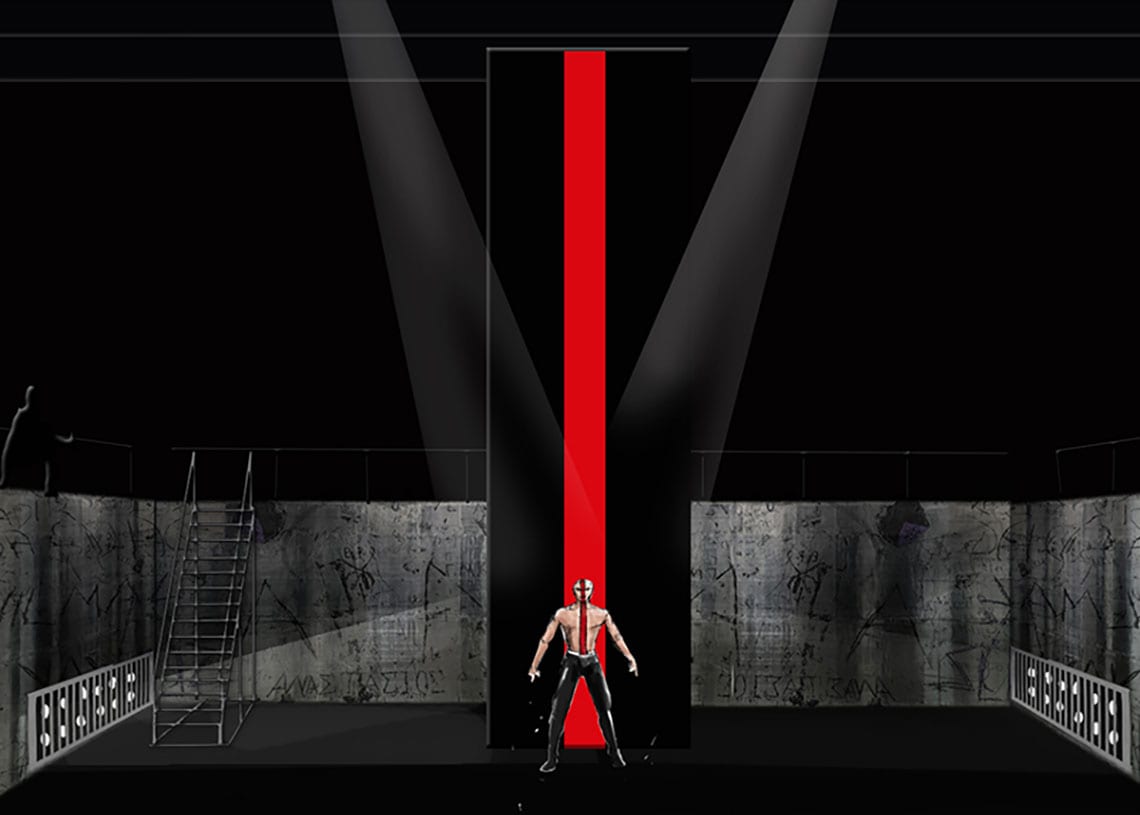
Michael B. Raiford channeled the shadow-filled, surreal visuals of Jean Cocteau’s 1946 version of Beauty and the Beast when conceiving the sets. The strategy was to create a version of Beauty and the Beast that returns to the shadowy ambiguities of the original tale. Designer Michael B. Raiford chose sets with an entirely black and white pallete.
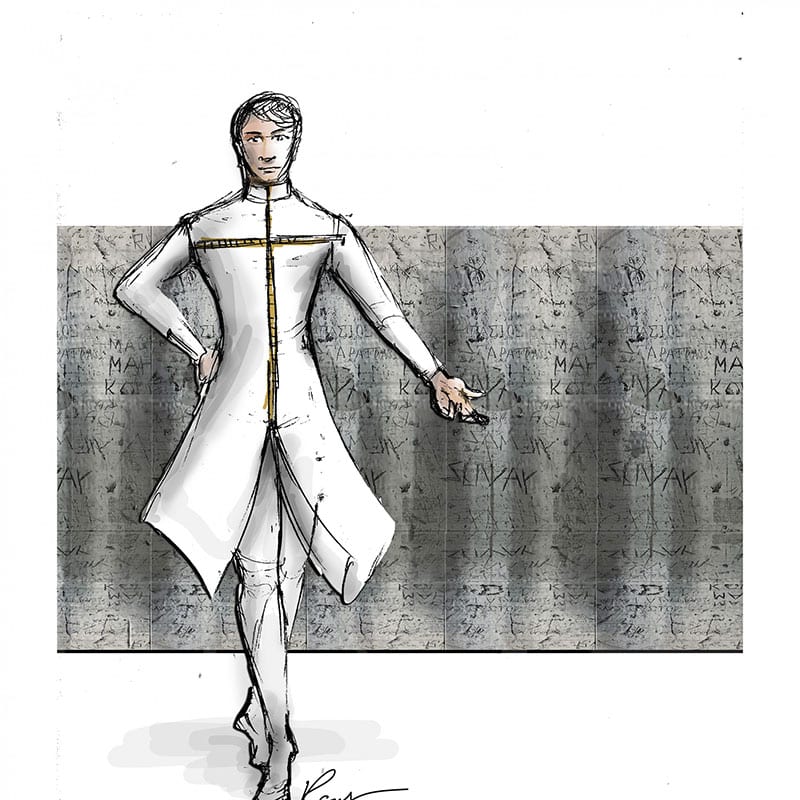
Stephen Mills and Michael B. Raiford drew costume inspiration from the late fashion designer, Alexander McQueen.
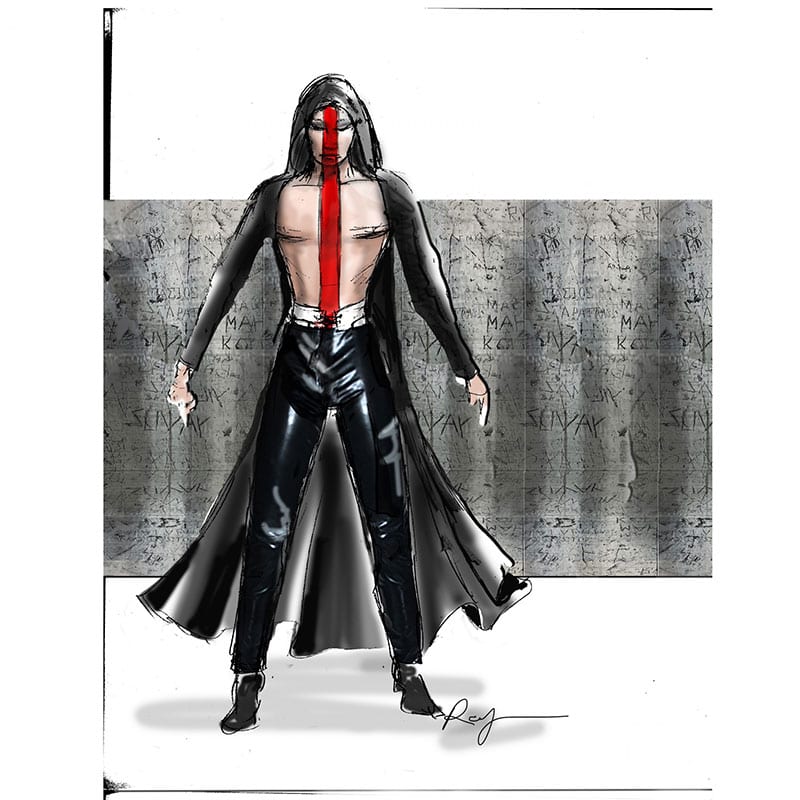
“The symbolism of the beast is simply someone who is marked as different in some way.” – Stephen Mills
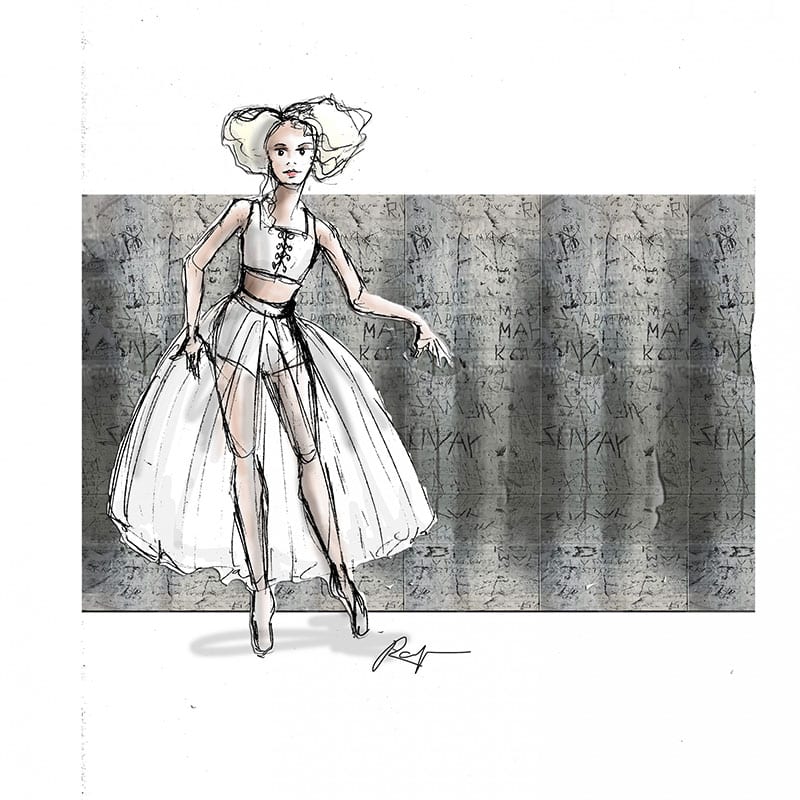
For the costumes, Stephen Mills and Michael B. Raiford chose a neutral color scheme with splashes of red.
What Critics are Saying...

Stephen Mills
Artistic Director/Choreographer

Graham Reynolds
Composer

Michael B. Raiford
Production Design

Tony Tucci
Lighting Design
Video Design: Colin Lowry, Jeff Kurihara

1740 – LA BELLE ET LA BÊTE PUBLISHED
French author Gabrielle-Suzanne Barbot de Villeneuve first publishes the novel La Belle et la Bête in 1740.
1756 – LA BELLE ET LA BÊTE ABRIDGED
Jeanne-Marie LePrince de Beaumont abridges the first published version of the tale written in 1740 by Gabrielle-Suzanne Barbot de Villeneuve into the version most commonly retold, while working in London as a governess.
1946 – LA BELLE ET LA BÊTE THE FILM
French filmmaker Jean Cocteau creates his ground-breaking movie, La Belle et la Bête.
1995 – LA BELLE ET LA BÊTE | THE OPERA
American composer Philip Glass composes new music for Jean Cocteau’s film, La Belle et la Bête, making the work into an opera.
2015 – BELLE / A TALE OF BEAUTY & THE BEAST
Ballet Austin Artistic Director/Choreographer Stephen Mills brings innovation to the stage with his World Premiere 3M Innovation Commission, BELLE / A Tale of Beauty & the Beast.
Prologue
In a beautiful place a young boy lives. He is surrounded by roses and a life filled with things that are good. As he grows, the goodness surrounding him is subsumed by evil. As the boy matures, he resists the evil but it cruelly marks him.
Act 1
A father is surrounded by his three daughters. One daughter, Belle, is particularly beautiful and the others are jealous. The father leaves his daughters for a trip and on his way finds himself at a mysterious place. Wandering into the garden alone he picks a rose to bring home to his daughters when he is suddenly confronted by a great Beast. The Beast demands to meet his most beautiful daughter if he wants to spare his own life. Belle arrives at the castle of the Beast and there tries to find comfort. Despite the beauty of the garden, Belle and the Beast have an exchange that causes her to flee home.
Act 2
Arriving home, Belle finds herself unwelcomed by her sisters. In the evening as she sleeps she has a terrible dream that causes her to return to the Beast’s castle. Upon arriving, she finds herself alone. She wanders the castle and comes upon a mirrored room. As she gazes upon her image she reflects upon others in her life, her family, the Beast and herself. In this moment she sees herself fully for the first time.
Licensing Information
For information about licensing this production, contact us or view the Technical Specifications.
Paul Michael Bloodgood
Associate Director / Film & Video Production
paul.bloodgood@balletaustin.org
Bill Sheffield
Production Director
512.476.9151, ext. 113
bill.sheffield@balletaustin.org
Technical Specifications
| Item | Minimum Requirements |
|---|---|
| Stage size | 40 X 40 (last lineset) |
| Grid height | 80 feet |
| Wing space | 20 feet per side |
| Upstage area | 10 feet |
| Working linesets | 40 |
| Stage floor | The stage floor must be resilient wood; the floor cannot be concrete or wood directly over concrete. If the surface is concrete, the Presenter must provide a professional dance sub-floor that must cover stage area from wall to wall. The surface must have any traps leveled, holes plugged, and no protruding nails or screws. The stage floor or sub-floor must be covered with a black, Marley-style dance floor. |
| Soft goods provided by house | Full set of black legs and border, two full-stage black panels, one black scrim |
| Recorded or live music | Recorded music only |
| Lighting | The Presenter shall furnish the company a complete inventory of house lighting equipment. The Company shall endeavor to work within the house instrumentation but any necessary rentals shall be at presenter’s cost. There should also be enough cable, side arms, C-clamps and color frames to sufficiently hang the lighting plot. |
| Audio | One house speaker system–center cluster and/or house left and right speakers; two to four backstage monitor speaker; one announce-quality microphone, separately controlled; one headset communication system, with seven stations and operable headsets; and one paging system to dressing rooms. |
| Power | Standard |
| Typical set-up schedule | Day 1: Hang electrics and goods; Day 2: Focus/finish set up; Day 3: Cueing/dancers rehearse |
| Personnel | One TD, one LED supervisor, LD required, 20+ dancers |
| Shipping | One semi truck |

